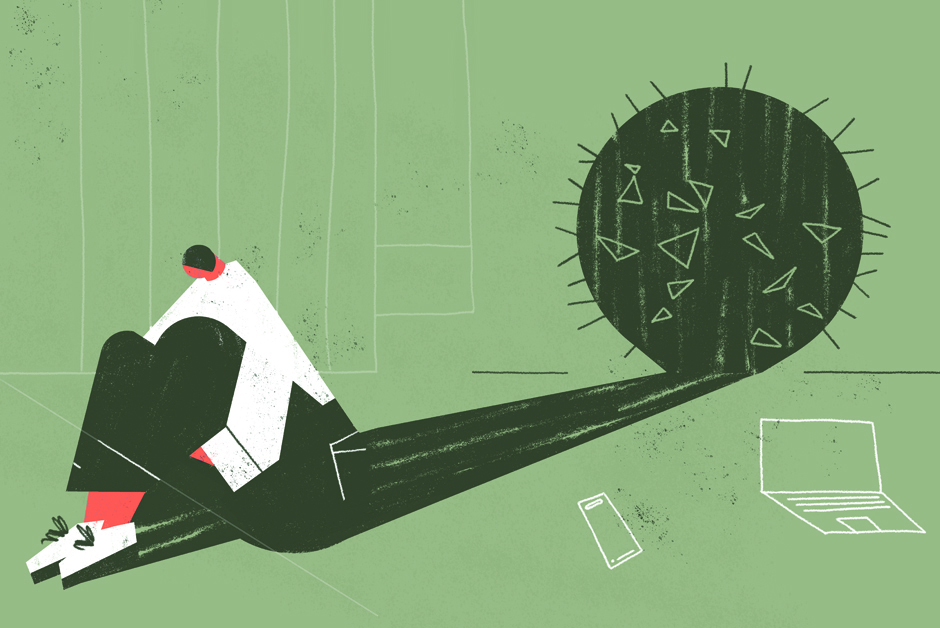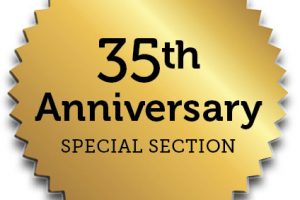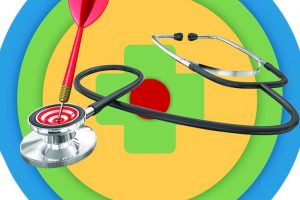Uncertainty is our bailiwick—what can we learn from this crisis?
By Kurt J. Wrobel
By almost any measure, the COVID-19 pandemic has been one of the most impactful events of our lives. As I write this, the novel coronavirus has killed over 100,000 Americans and almost 300,000 people internationally. Most people have spent months in lockdown waiting for the resumption of economic, education, and leisure activities. Other than trips to the grocery store or walks outside, most people have only had in-person interactions (outside of their immediate family) through their cell phone or by video conference.
We are experiencing an event that has the potential to change how we live our lives. Recreational events and experiences that include crowds may take years to resume their former popularity. Some of our most important institutions—including schools, universities, and cities—might need to undergo significant changes to protect people from the virus. The economic damage has been and could continue to be significant.
On the other hand, we might find a vaccine or a treatment that could control the virus. We might also find that our mitigation practices—including social distancing and masking—could be effective in controlling the spread of the virus. We might also find an effective testing regime that will allow us to quarantine people soon after infection and limit the spread of the virus.
Several months after the start of the pandemic, we simply do not know what is going to happen. We have certainly learned more about the virus and its virulence, but much still needs to be learned before we can ensure our long-term safety.
At this point and throughout the pandemic, policymakers and people have been struggling with how to make decisions in a time of significant uncertainty. Looking back at the past several months, some decisions were good, and some were clearly bad.
With this as background, I wanted to offer some thoughts on how the actuarial profession can think about the pandemic and how we can learn about the environment that helped produce decisions that underestimated the threat from the virus.
Decision-Making Under Uncertainty
As risk managers, we are constantly making decisions in an uncertain environment where we have limited data and where our estimates have a profound impact on the financial security of those people protected by insurance products.
In a similar fashion, the decision-making throughout the pandemic involved making decisions with insufficient or incomplete information. It also provides a case study on how a challenging environment can produce suboptimal decisions.
Let’s discuss a few elements that helped contribute to our delayed response to the pandemic.
Reluctance to grasp the new reality. COVID-19 has been particularly difficult to manage because it involves a problem that we have never encountered and runs completely counter to our typical daily experiences. We live in a modern world where we have largely been shielded from communicable diseases; modern medicine, technology, simple cleanliness, and better information on the transmission of disease have all helped to limit diseases that have historically impacted humans.
In addition, we rarely encounter decisions that can lead to a catastrophic outcome that goes beyond a merely unfavorable result for a single company or country. As seen historically, an outbreak can increase exponentially and dramatically impact people across countries and regions.
This experience has made us much less likely to be concerned about the impact of communicable diseases. With this complacency, many policymakers and individuals simply assumed that the pandemic could be controlled or that it would stop at our country’s borders. They also failed to fully appreciate the potential for the virus to grow exponentially.
Insufficient appreciation for the lack of data to make decisions. In most areas of life, we have a significant amount of data to help make decisions. One only needs to think about other areas of life where we can more accurately measure risk through years of extensive measurement. The safety of activities including air travel, driving a car, taking a train, or even hang-gliding can be measured with historical experience and acted upon in our daily decisions. We know air travel is extremely safe and we can make decisions based on a long safety record.
This, of course, is in stark contrast to the pandemic—where the data was initially nonexistent and then quickly changed as more information became available. Moreover, in some cases the data could have been simply inaccurate.
In comparison to almost any other life choice, we had, and to a degree still have, insufficient information to make decisions on the spread of the virus, including:
- The percentage of people who have been exposed to the virus;
- How easily the virus is spread under a variety of circumstances—with personal protective equipment (PPE), under social distancing, and in certain environments;
- A complete picture of how the virus is mutating; and
- The individual actions that people are taking to mitigate the spread of the virus through social distancing and the use of PPE.
These are all important pieces of information that could have a profound impact on the trajectory of the virus; without this information it is extremely difficult to estimate what will happen.
Without sufficient historical experience, applying the usual rules to the game and considerations does not make sense. It’s not like air travel, driving a car, taking a train, or hang-gliding.
In this case, detailed quantitative models based on assumptions and imperfect data are simply going to be much less useful than what we’ve become accustomed to in other aspects of life. This reality runs counter to our usual assumption that Big Data and sophisticated modeling can solve all questions.
Slow response to important emerging data. As data emerges, you need to rethink your original assumptions and ensure that they are consistent with the new reality.
In the case of the United States, as the virus showed itself to be highly virulent and easily spread in an urban environment in Asia and Europe, we should have adjusted our expectations and decisions. As many public officials suggested that we should go about our daily lives—including taking public transportation and attending plays—we were, in essence, making a giant bet that the virus wouldn’t spread to our own cities, which have thousands of people traveling from Europe and Asia. This bet made daily activities like riding the subway substantially more dangerous than other things that we do in our daily lives.
Taken in total, the factors highlighted above helped contribute to a lack of action regarding the pandemic. We were slow to recognize the impact of the pandemic because of our historical success with communicable diseases; we didn’t appreciate the extent to which we didn’t have historical information to make decisions; and we didn’t respond quickly enough to changing data.
As we look back, I think we should have clearly shown greater caution and respect for the virus and its potential to spread. We should have also more carefully considered the outcomes of a policy rather than the discrete probabilities of a particular outcome. Using this framework—a response that erred toward greater precaution toward a catastrophic outcome—would certainly have costs, but these costs would have been much lower than what we experienced through the pandemic.
As we begin to open up and consider important policy decisions regarding the virus, I also think it’s important to look closely at the emerging data and understand the assumptions we are making and how this view could change as more data becomes available. For example, if we believe that social distancing will be effective, we should define success ahead of time and adjust our beliefs as more data becomes available.
I also hope that we respect the potential outcome of any uncertain situation that can grow exponentially worse. As in almost any decision, an outcome that could lead to a catastrophe needs to be approached differently than one that could lead to a merely unfavorable outcome.
We also need to get comfortable with saying “We don’t know” in some cases. When you have little or imperfect data, a changing virus, and a trajectory that could change based on people’s actions, it’s acceptable—preferable, even—to say we don’t know, but also be cautious without knowing all the probabilities of our actions. Saying “We don’t know” also forces you to spend much more time on the outcome rather than just the probabilities.

In the future, I also hope that we consider the potential impact of a pandemic on hospital capacity rather than focus solely on efficiency metrics. I know this point now seems obvious, but for many years we have been focused solely on efficiency measures—percentage of gross domestic product spent on health care, measure of utilization relative to well-managed, etc.—and have not considered what would happen during a crisis.
Some Final Thoughts
When people think of actuaries, most immediately think that we can provide insight into the expected medical costs associated with an event. While certainly true, I also think that timing is important. There is a time and place to talk about costs and financing; sometimes it is important to defer judgment until the worst of the pandemic is over. I also like to say, “It costs what it costs.”
During this time, it is also important to be empathetic to all people—whether it be people directly impacted through their own health or the health of a loved one, or someone who has had their livelihood impacted. While I think most people can intuitively appreciate this, I also think it’s extremely important to understand the experience of whoever might be part of the discussion.
Lastly, as I suggested throughout this article, I also think that actuaries can provide insights into how to improve decision-making during uncertainty. Our skill set in managing and understanding uncertainty is important in many aspects of life—and the pandemic serves as a clear example.
KURT J. WROBEL, MAAA, FSA, is the chief financial officer, and chief actuary with The Geisinger Health Plan.




